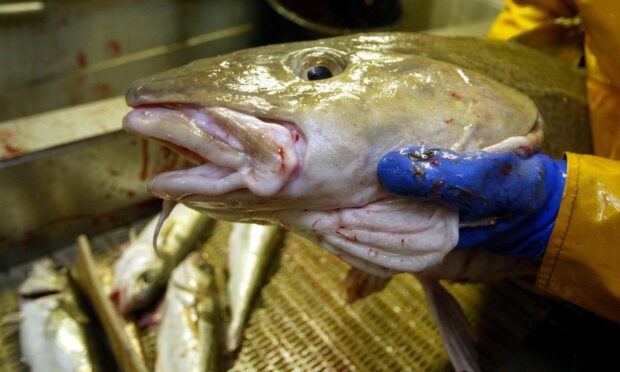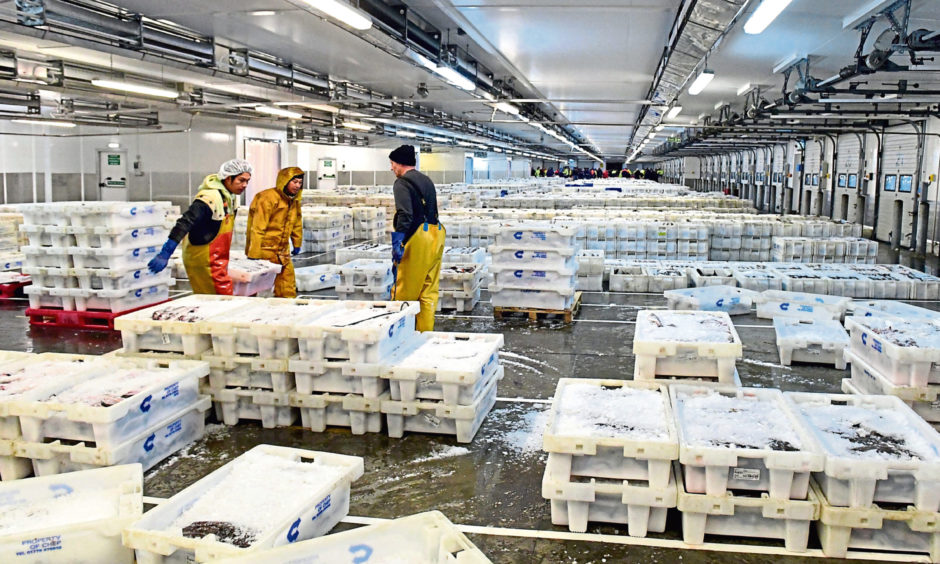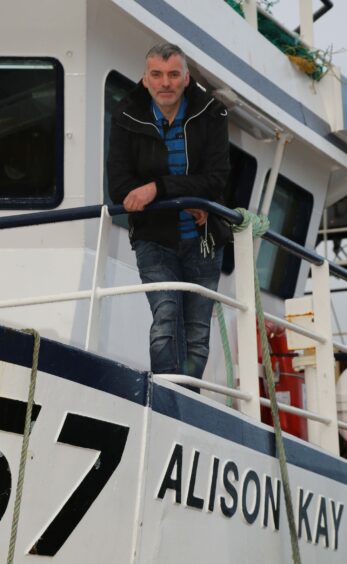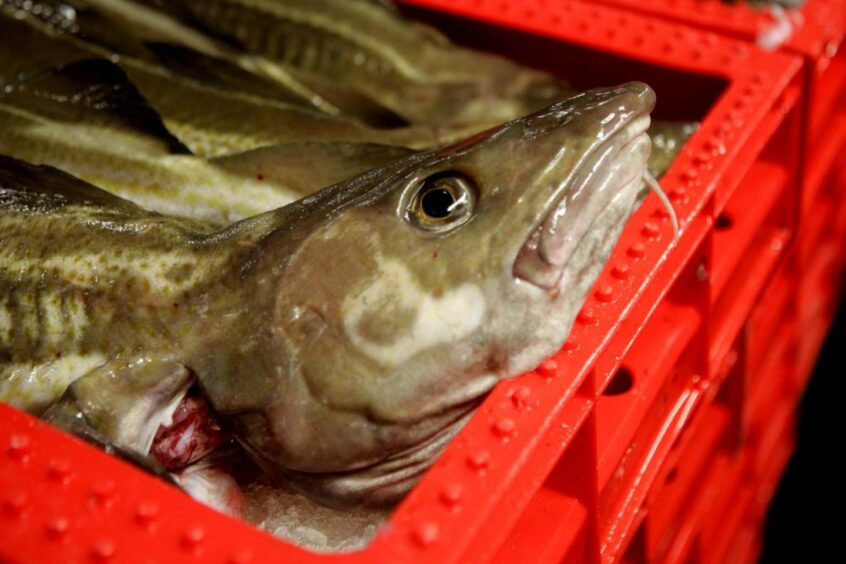Fishers from the main North Sea fishing nations have joined forces to improve the scientific surveys that inform international cod quotas.
Skippers and other industry representatives from Shetland, Scotland, Denmark, Norway and England met in Copenhagen to discuss a “quota mismatch” they are facing at sea, Shetland Fishermen’s Association (SFA) said today.
Vessels are encountering more cod than current official assessments, the industry group said, adding the recent talks in Copenhagen “painted a unanimous picture” of an abundant stock stretching across the whole North Sea and beyond.
The current situation at sea is putting viable boats at risk. I’ve been fishing since the mid-80s and have never seen so much cod around Shetland.”
James Anderson, chairman Shetland Fishermen’s Association.
North Sea cod has tended to be the most valuable catch for Shetland’s white-fish fleet.
But quota for the species – a staple of fish suppers in many parts of the UK – has been slashed by 70% in just three years.
This is because scientific surveys have failed to detect the mass of cod reported by fishers.
According to the SFA, this “poor science” leads to quota recommendations that bear no resemblance to the volume of fish in the sea.
SFA chairman James Anderson, skipper of the Lerwick-registered Alison Kay, said: “Now we have an international agreement to work together.
“Fishermen are ready and willing to collaborate with government scientists to see survey trawl results and quota recommendations made more realistic.
“The current situation at sea is putting viable boats at risk. I’ve been fishing since the mid-80s and have never seen so much cod around Shetland.
“We try to avoid it because quotas have been cut, but that’s nearly impossible now without wasted trips and wasted fuel at great expense. It’s difficult to make sense of that as a fisherman.”
Danish Fishers Association representative Alfred Fisker Hansen said: “Our boats are finding cod in quantities, and in areas, where it hasn’t been seen for years.
“We’re now struggling to avoid it, with quotas so low, and it has become a choke species (using up valuable quota in a mixed fishery) for the whole Danish white-fish fleet.”
August Fjeldska, of the Norwegian Fishermen’s Association, added: “There is so much cod in Norwegian waters now that you struggle to fish for any other species.
“We have a problem, and we need to know why the science isn’t picking up on the huge amounts of cod – so that it can be reflected in fairer quotas.”
Last month the SFA and Scottish White Fish Producers’ Association – the largest fishing association in Europe – committed to fund alternative, industry-led stock assessment surveys.
They pledged to develop “rigorous, transparent studies of key fish stocks that are fit for purpose”.
They said they had encountered indifference from the International Council for Exploration of the Sea – the international body of scientists advising European governments on annual catch limits – and fisheries managers over an “urgent need for reform”.
Study findings last year from the NAFC Marine Centre, part of the University of the Highlands and Islands, in Scalloway, Shetland, showed white-fish stocks in Scottish waters had doubled in size over the past two decades and reached record levels.
The analysis also found the amount of these fish being caught has declined markedly over the same period.
George Eustice: Joint fisheries statement ‘recognises importance of the industry’
Fishing chief says wind projects bring ‘new challenges’ for Scottish fleet



